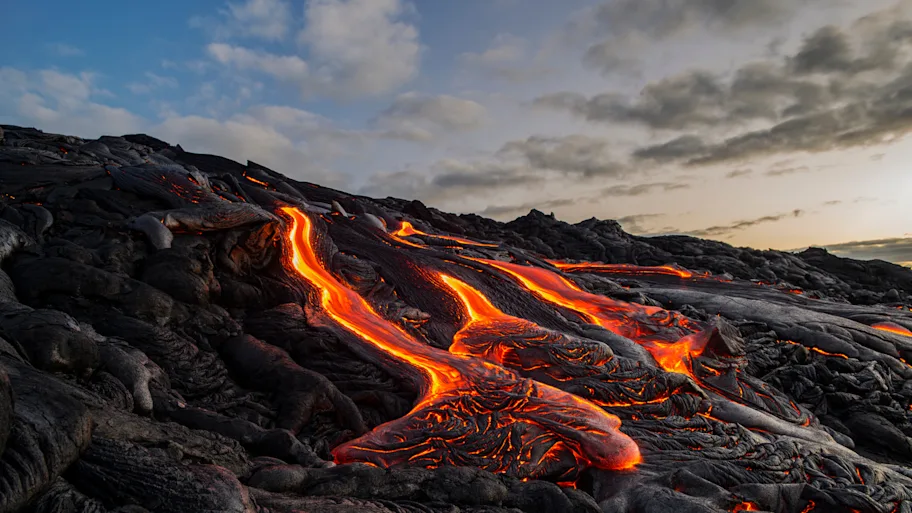
- Science news
- Life sciences
- Ancient collagen can help identify a 'wombat the size of a hippo' in the fossil record
Ancient collagen can help identify a 'wombat the size of a hippo' in the fossil record

Peptide markers in collagen can help us identify species from fragments of bone too damaged to recognize, and fossils found in places that are too hot or humid to preserve DNA. A team of scientists have now successfully established markers for three species of extinct Australian megafauna, opening the way for research which could help us understand how a series of unexplained extinctions of megafauna 50,000 years ago happened, and if humans were responsible.
What happened to all the megafauna? From moas to mammoths, many large animals went extinct between 50 and 10,000 years ago. Learning why could provide crucial evidence about prehistoric ecosystems and help us understand future potential extinctions. But surviving fossils are often too fragmented to determine the original species, and DNA is not always recoverable, especially in hot or damp environments. Now scientists have isolated collagen peptide markers which allow them to identify three key megafauna that were once present across Australia: a hippo-sized wombat, a giant kangaroo, and a marsupial with enormous claws.
“The geographic range and extinction date of megafauna in Australia, and potential interaction with early modern humans, is a hotly debated topic,” said Professor Katerina Douka of the University of Vienna, senior author of the article in Frontiers in Mammal Science.
“The low number of fossils that have been found at paleontological sites across the country means that it is difficult to test hypotheses about why these animals became extinct,” explained first author Dr Carli Peters of the University of Algarve. “Zooarchaeology by mass spectrometry — ZooMS — could increase the number of identified megafauna fossils, but only if collagen peptide markers for these species are available.”
Walking with giants
Analyzing the peptides — short chains of amino acids — found in samples of collagen allows scientists to distinguish between different genera of animals, and sometimes between different species. Because collagen preserves better than DNA, this method can be applied successfully in tropical and sub-tropical environments where DNA is unlikely to survive. But most reference markers are for Eurasian species that never lived in other parts of the world. This research develops new reference markers for an Australian context, allowing scientists to glean more information from Australia’s fragmented fossil record.
“Proteins generally preserve better over longer timescales and in harsh environments than DNA does,” said Peters. “This means that in the context of megafauna extinctions, proteins may still be preserved where DNA is not.” The scientists chose to study Zygomaturus trilobus, Palorchestes azael, and Protemnodon mamkurra, three species which could be particularly valuable for understanding megafauna extinctions. Z. trilobus and P. azael are from families of animals that went completely extinct during the Late Quaternary, while P. mamkurra survived long enough that it could potentially have overlapped with humans arriving in Tasmania. Dr Richard Gillespie, a co-author, previously dated the bones to beyond 43,000 years ago.
“Zygomaturus trilobus was one of the largest marsupials that ever existed — it would have looked like a wombat the size of a hippo,” said Douka. “Protemnodon mamkurra was a giant, slow-moving kangaroo, potentially walking on all fours at times. Palorchestes azael was an unusual-looking marsupial that possessed a skull with highly retracted nasals and a long protrusible tongue, strong forelimbs, and enormous claws. If the early modern humans who entered Sahul — the palaeocontinent that connected present-day Australia, New Guinea and Tasmania 55,000 years ago — came across them, they would have certainly got a big surprise.”
Read and download original article
Markers of the past
The scientists ruled out any contaminants and compared the peptide markers they found to reference markers. The collagen in all three samples was well-preserved enough for the team to identify suitable peptide markers for all three species.
Using these markers, the team were able to differentiate Protemnodon from five living genera and one extinct genus of kangaroos. They were also able to distinguish Zygomaturus and Palorchestes from other living and extinct large marsupials, but they couldn’t differentiate the two species from each other. This is not unusual with ZooMS, since changes in collagen accumulate extremely slowly, over millions of years of evolution. Unless further research allows for more specificity, these markers are best used to identify bones at the genus level rather than the species.
However, the ability to tell apart genera from more temperate regions of Sahul does present an opportunity to try to identify bones found in more tropical areas, where closely-related species — which are likely to have similar or even the same peptide markers — would have lived. DNA rarely preserves over time in these regions.
“By using the newly developed collagen peptide markers, we can begin identifying a larger number of megafauna remains in Australian paleontological assemblages,” said Peters. “However, there are a lot more species for which collagen peptide markers still need to be characterized. Two examples would be Diprotodon, the largest marsupial genus to have ever existed, and Thylacoleo, the largest marsupial predator.”
REPUBLISHING GUIDELINES: Open access and sharing research is part of Frontiers’ mission. Unless otherwise noted, you can republish articles posted in the Frontiers news site — as long as you include a link back to the original research. Selling the articles is not allowed.







